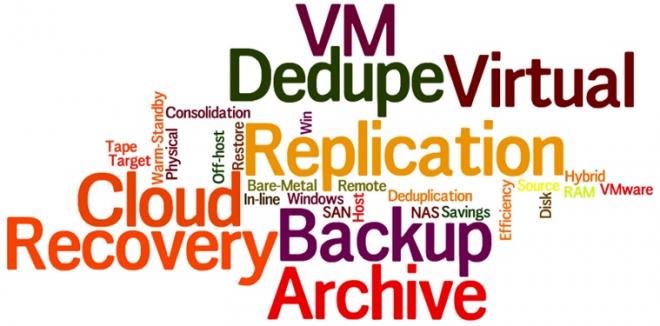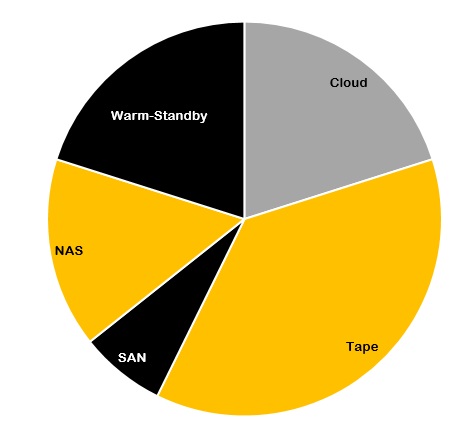- VOX
- Technical Blogs
- Backup Exec
- When Your Business’ Data is on the Line, Hope is N...
When Your Business’ Data is on the Line, Hope is NOT a Strategy
- Subscribe to RSS Feed
- Mark as New
- Mark as Read
- Bookmark
- Subscribe
- Printer Friendly Page
- Report Inappropriate Content

As an IT administrator, there are few things which conjure more of a sick feeling in the pit of one’s stomach than a disastrous event which corrupts or loses company data. Data is the second currency of a business after actual currency, so losing it is not an option. These disastrous events take all kinds of forms including natural disasters, data breaches from hackers, accidental data deletion, and a myriad of others. Even something as small as an engineer spilling coffee on a system could wipe out the server and any virtual servers running on it.
However, statistically the data shows us that most organizations are not implementing a disaster recovery plan. In 2012, Symantec’s SMB (worldwide organizations with less than 250 employees) disaster preparedness survey found that despite its importance, 74% of them didn’t have a disaster recovery plan in place. One year later, in 2013, another Symantec survey conducted at a Gartner Data Center conference, found that number still hadn’t moved.
The best way of finding success with a data protection solution is by breaking through the three biggest barriers to success:
 Fragmented Information. IT can no longer afford to approach data backup the same as it has in the past; rigid, silo-ed, and sluggish. If file server data is backed up to the cloud, SQL databases are backed up locally on tapes, and accounting data is backed up to a NAS, silo-ed data and duplicity are robbing your organization’s storage efficiency.
Fragmented Information. IT can no longer afford to approach data backup the same as it has in the past; rigid, silo-ed, and sluggish. If file server data is backed up to the cloud, SQL databases are backed up locally on tapes, and accounting data is backed up to a NAS, silo-ed data and duplicity are robbing your organization’s storage efficiency.- Exclusion of VMs from Standard Backups. Consolidating backup data on physical servers is important enough, but virtual servers present another layer of needed protection. A 2013 study from King Research and Symantec found that over half of organizations use different backup applications for virtual machines and physical machines. Choose one data protection solution which is capable of backing up and restoring data from virtual and physical servers. As in the first example, consolidation is your friend.
- Fear of the Difficult. Occasionally there is the perception that the process of evaluating, centralizing, and consolidating is too difficult. This can be especially true when administrators are facing multiple servers, locations, and databases on the network. However, this is simply not the case, and the time and money they save while eliminating duplication far outweighs the initial time investment. Also be aware that the larger the network grows, the more unwieldy and expensive multiple systems will become.
There are numerous advantages to consolidating data with the goal of becoming a more agile IT department. In addition to being able to back up all of the data in one location, maximizing the efficiency of the storage, using one application, there is the added bonus in being able to quickly dive into a backup file to restore lost data, too. Speed of restoration should also be a key consideration before looking to the cloud to be your only target for backing up data. Check out Symantec’s work on how to enable the Agile Data Center for more information. Your business is only going to be as modernized and agile as your IT; it’s what enables your people and processes to work smoothly together.
You must be a registered user to add a comment. If you've already registered, sign in. Otherwise, register and sign in.
- Power-up ransomware resiliency with retention lock/WORM in Protection
- Ransomware Resilience in Backup Exec in Backup Exec
- Understand, Plan and Rehearse Ransomware Resilience series - Design to Recover in Protection
- Understand, Plan and Rehearse Ransomware Resilience series - Strategy in Protection
- Intern Spotlight – Veritas Intern Program’s commitment to engaging the next generation of innovators in Inside Veritas

